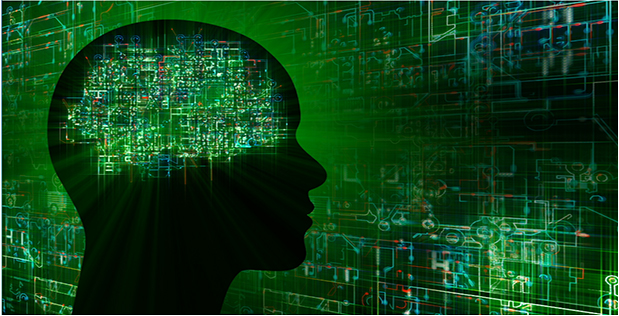Interfacing directly with the human neural system to promote health and expand human capacities is an ongoing goal in brain research. Today, the Defense Advanced Research Projects Agency (DARPA) announced five contracts has been issued in support of it Neural Engineering System Design (NESD) program announced last year. The list of winners is below.
NESD’s formal goal is development of an “implantable system able to provide precision communication between the brain and the digital world. Such an interface would convert the electrochemical signaling used by neurons in the brain into the ones and zeros that constitute the language of information technology, and do so at far greater scale than is currently possible.” The work has the potential to significantly advance scientists’ understanding of the neural underpinnings of vision, hearing, and speech and could eventually lead to new treatments for people living with sensory deficits.
“The NESD program looks ahead to a future in which advanced neural devices offer improved fidelity, resolution, and precision sensory interface for therapeutic applications,” said Phillip Alvelda, the founding NESD Program Manager. “By increasing the capacity of advanced neural interfaces to engage more than one million neurons in parallel, NESD aims to enable rich two-way communication with the brain at a scale that will help deepen our understanding of that organ’s underlying biology, complexity, and function.”
Not surprisingly, the project is necessarily a cross-disciplinary. Among the many disciplines represented in the teams are neuroscience, low-power electronics, photonics, medical device packaging and manufacturing, systems engineering, mathematics, computer science, and wireless communications. In addition to overcoming engineering-oriented hardware, biocompatibility, and communication challenges, the teams must also develop advanced mathematical and neuro-computation techniques to decode and encode neural data and compress those troves of information so they are tractable within the available bandwidth and power constraints.
Here’s a brief snapshot of the teams chosen and the focus of their work (for additional details, refer to the NESD factsheet):
- Brown University team led by Dr. Arto Nurmikko will seek to decode neural processing of speech, focusing on the tone and vocalization aspects of auditory perception. The team’s proposed interface would be composed of networks of up to 100,000 untethered, submillimeter-sized “neurograin” sensors implanted onto or into the cerebral cortex. A separate RF unit worn or implanted as a flexible electronic patch would passively power the neurograins and serve as the hub for relaying data to and from an external command center that transcodes and processes neural and digital signals.
- Columbia University team led by Dr. Ken Shepard will study vision and aims to develop a non-penetrating bioelectric interface to the visual cortex. The team envisions layering over the cortex a single, flexible complementary metal-oxide semiconductor (CMOS) integrated circuit containing an integrated electrode array. A relay station transceiver worn on the head would wirelessly power and communicate with the implanted device.
- Fondation Voir et Entendre team led by Drs. Jose-Alain Sahel and Serge Picaud will study vision. The team aims to apply techniques from the field of optogenetics to enable communication between neurons in the visual cortex and a camera-based, high-definition artificial retina worn over the eyes, facilitated by a system of implanted electronics and micro-LED optical technology.
- John B. Pierce Laboratory team led by Dr. Vincent Pieribone will study vision. The team will pursue an interface system in which modified neurons capable of bioluminescence and responsive to optogenetic stimulation communicate with an all-optical prosthesis for the visual cortex.
- Paradromics, Inc., team led by Dr. Matthew Angle aims to create a high-data-rate cortical interface using large arrays of penetrating microwire electrodes for high-resolution recording and stimulation of neurons. As part of the NESD program, the team will seek to build an implantable device to support speech restoration. Paradromics’ microwire array technology exploits the reliability of traditional wire electrodes, but by bonding these wires to specialized CMOS electronics the team seeks to overcome the scalability and bandwidth limitations of previous approaches using wire electrodes.
- University of California, Berkeley, team led by Dr. Ehud Isacoff aims to develop a novel “light field” holographic microscope that can detect and modulate the activity of up to a million neurons in the cerebral cortex. The team will attempt to create quantitative encoding models to predict the responses of neurons to external visual and tactile stimuli, and then apply those predictions to structure photo-stimulation patterns that elicit sensory percepts in the visual or somatosensory cortices, where the device could replace lost vision or serve as a brain-machine interface for control of an artificial limb.
DARPA structured the NESD program to facilitate commercial transition of successful technologies. Key to ensuring a smooth path to practical applications, teams will have access to design assistance, rapid prototyping, and fabrication services provided by industry partners whose participation as facilitators was organized by DARPA and who will operate as sub-contractors to the teams.
Link to DARPA post: http://www.darpa.mil/news-events/2017-07-10



























































